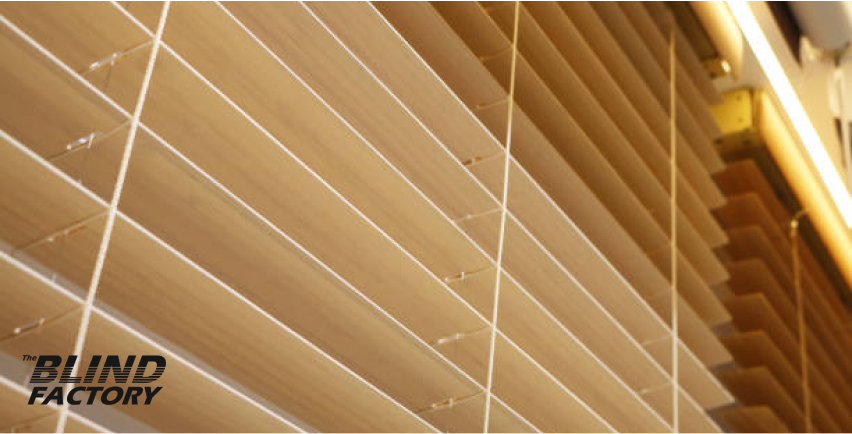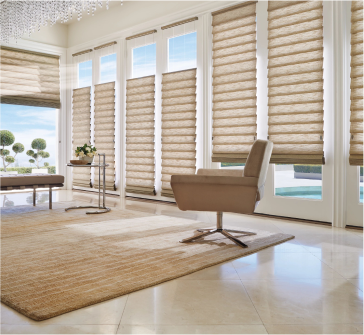Maintaining your home’s blinds is essential for both aesthetic and functional purposes. Blinds can add elegance to any room but may encounter issues over time, such as broken slats or tangled cords.
Fortunately, many of these problems can be easily fixed with some DIY know-how.
Types of Blinds and Their Common Issues
When it comes to maintaining your home’s window treatments, understanding the types of window blinds, including their common issues, is essential for effective DIY repair.

Venetian Blinds
Venetian blinds are characterized by horizontal blinds that can be tilted to control light and privacy. They are typically made from materials like wood, aluminum, or plastic and are popular for their classic and versatile appearance.
Common Problems
- Broken Slats: One of the most common issues, especially with wood and plastic varieties, is slats breaking or cracking due to age or mishandling.
- Tangled Cords: The cords used to raise, lower, and tilt the broken slat can become tangled, making the blinds difficult to operate.
- Misaligned Slats: Slats can sometimes become misaligned, causing uneven spacing and an unattractive appearance.

Roller Blinds
Roller blinds consist of a single piece of fabric that rolls up and down using a mechanism at the top.
They are sleek, easy to use, and available in various materials, making them a popular choice for modern interiors.
Common Problems
- Stuck Mechanism: The rolling mechanism can become jammed or stuck, preventing the blind from moving smoothly.
- Fabric Fraying: Over time, the edges of the fabric can fray, especially if the blinds are frequently adjusted.
- Uneven Rolling: The blind may roll up unevenly, causing one side to be higher than the other, which can be both an aesthetic and functional issue.

Vertical Blinds
Vertical blinds feature long, vertical vanes that hang from a track and can be rotated to control light and privacy.
A crucial component in this system is the carrier stem, which helps in the rotation and overall functionality of the blinds. They are commonly used for large windows and sliding doors.
Common Problems
One common issue with vertical blinds is jamming or misalignment, often caused by problems with the carrier stems.
These issues can lead to difficulty in rotation and overall poor operation of the blinds.
- Damaged Vanes: Vanes can become bent, cracked, or otherwise damaged, especially if they are frequently moved.
- Broken Chains: The chains used to operate the blinds can break, making it difficult to adjust the vanes or open the blinds.
- Off-Track Vanes: Vanes can come off their tracks, causing them to hang unevenly or preventing them from sliding along the track.

Roman Blinds
Roman blinds are made of fabric and fold into neat pleats when raised. They offer a soft, elegant look and are available in various styles, from classic to contemporary.
Common Problems
- Broken Cords: The cords used to lift and lower the blinds can break, making it impossible to adjust the blinds.
- Fabric Issues: The fabric may develop wrinkles, tears, or stains, affecting the appearance of the blinds.
- Misalignment: The folds can become misaligned, causing the blinds to hang unevenly and detracting from their aesthetic appeal.
What You’ll Need to Repair Your Blinds
Before diving into your blind repair project, it’s a good idea to gather the right tools and materials. Having everything on hand will make the process smoother and help you get the job done efficiently.
Start with some basic tools. A standard screwdriver is essential for loosening or removing screws that hold the blinds or brackets in place. You’ll also want a pair of pliers for gripping, bending, or removing metal parts—especially if you need to extract a damaged slat or cord. For more precise tasks, such as removing small plugs or realigning components, needle-nose pliers are incredibly helpful.
Depending on the repair, you may also need specific replacement parts. These could include slats or vanes, cords, mounting brackets, or plastic loops used to secure the bottom of vertical blinds via a spacer chain.
A measuring tape will ensure any replacement parts are the right size and properly aligned, while a utility knife is useful for cutting cords or trimming fabric cleanly. It’s also smart to have cord stops and pulls handy in case you need to replace any missing or damaged operating parts.
With these tools and materials ready to go, you’ll be well-equipped to tackle most DIY blind repairs confidently.
Life Hacks & Frugal Fixes for Blind Repair
Want to fix your blinds without spending a fortune? These clever, low-cost hacks make use of everyday household items—and they work surprisingly well. Perfect for quick fixes, renters, or anyone who loves a smart shortcut.
Paperclip as a Cord Stop Replacement
If the cord stop on your blinds goes missing, don’t panic. Loop a paperclip or safety pin onto the pull cord where the stopper would normally sit. This keeps the cord from slipping through the mechanism and helps your blinds function just like before—at least until you get a proper replacement.
Binder Clip for a Broken Tilt Wand
When the tilt wand breaks off, try this fix: attach a binder clip to the small exposed tilt rod. Use the clip as a makeshift handle to open and close the slats. It may not look pretty, but it works like a charm and takes just seconds to set up.
Fishing Line as a Lift Cord Substitute
Broken lift cord? Fishing line is a surprisingly effective replacement. It’s thin, sturdy, and nearly invisible. Run it through the same path as the original cord and tie it securely. Your blinds will lift and lower with ease—no fancy tools needed.
Shoelace or Drawstring as a Quick Cord Fix
If you don’t have fishing line, a spare shoelace, or the drawstring from an old hoodie can do the trick. Just trim it to size and use it to thread through the blinds. It’s a handy short-term fix that keeps your blinds usable without spending a cent.
These solutions are a quick fix, but if you’re looking for more of a long-term fix, this next section is for you.

How to Repair Window Blinds Without Calling a Pro
Fixing your blinds doesn’t have to be complicated. With the right tools and a little patience, you can tackle many common issues yourself—saving time, money, and avoiding the hassle of a full replacement. This step-by-step guide outlines how to diagnose and repair the most frequent problems with various types of window blinds.
Step 1: Inspect the Blinds
Before jumping into any repair, take a few minutes to identify exactly what’s wrong. Look closely at each part of the blind and test its movement.
Check for:
- Broken or cracked slats
- Tangled or frayed cords
- Misaligned vanes or slats
- Jammed rollers or tracks
- Difficulty raising, lowering, or tilting the blinds
This simple inspection will help you figure out which repair steps are needed.
Step 2: Replacing Broken Slats in Venetian Blinds
Venetian blinds sometimes suffer from broken or damaged slats, especially with wear and tear or accidental pressure.
To replace a damaged slat:
- Fully raise the blinds and secure them in place.
- Remove the end caps from the bottom rail to access the slats.
- Carefully slide out the broken slat.
- Insert a new slat that matches in size and material.
- Reattach the end caps and lower the blinds to ensure everything sits evenly.
Replacement slats are usually easy to find in hardware stores or through the original manufacturer.
Step 3: Fixing Tangled or Broken Lift Cords and Chains
Tangled cords can stop your blinds from operating smoothly, and broken cords or chains will need replacing.
Here’s what to do:
- Lay the cords on a flat surface and gently untangle any knots, taking care not to fray the material.
- If the cord or chain is broken, measure its length and thickness, then purchase a replacement of a similar size.
- Remove the old cord or chain by unthreading it from the mechanism.
- Thread the new one through all pulleys or guides, then secure it firmly.
Make sure everything moves smoothly when testing it afterward.
Step 4: Adjusting or Replacing Roller and Roman Blind Mechanisms
If your roller or Roman blinds aren’t functioning correctly, the issue may lie in their tension mechanism. These mechanisms control how easily the blinds roll up or down.
To adjust the mechanism:
- Remove the blind from its bracket.
- Locate the tension control, which usually sits at one end of the roller.
- Turn it clockwise to add tension (useful if the blind won’t stay up), or counterclockwise to decrease it (if the blind won’t roll down).
- Reattach the blind and test the movement.
If adjusting doesn’t solve the problem, you may need to replace the mechanism entirely. Just make sure to follow the manufacturer’s instructions carefully when installing a new part.
Step 5: Realigning Off-Track Vanes on Vertical Blinds
Vertical blinds can become misaligned over time, especially if a vane slips out of place or a clip breaks.
To fix this:
- Remove any displaced vanes from the track.
- Inspect the carrier clips for damage. If a clip is broken, replace it.
- Slide the vane back into position, ensuring it clicks securely into the clip.
- Check the alignment by operating the blinds back and forth.
If multiple vanes seem loose, it might be worth replacing several clips or chains to keep things in sync.
When to Call a Professional
While many blind repairs can be handled with a little DIY effort, there are times when it’s best to leave things to a professional. If the blind’s internal mechanism is seriously damaged, or if the fabric is badly torn or stained, a home fix might not be practical—or even possible. The same goes for motorized or smart blinds, which often require specialized tools or knowledge to repair properly. If you’ve already tried to fix the issue and it still isn’t working as it should, calling a professional could save you time, stress, and potentially more damage.
In situations like these, reaching out to a trusted repair service, such as The Blind Factory, can be a smart move. A professional can evaluate the problem quickly and provide a solution that will restore your blinds to full functionality. If you’re unsure whom to call, consider asking friends, family, or your local home improvement store for recommendations. You can also look at online reviews to find a company with a solid reputation and experience in repairing the type of blinds you have.
Start Repairing Your Blinds Today
Repairing your blinds can save you money and extend their lifespan, all while giving you a sense of accomplishment. With the right tools and a little effort, you can keep your blinds looking and functioning their best for years to come.
Frequently Asked Questions
What is the best glue for broken blinds?
For plastic or vinyl blind repairs, a strong, clear-drying adhesive like Loctite Super Glue or E6000 works well. For fabric blinds, use a fabric glue that dries flexible.
Can broken blinds be repaired?
Yes, most blind issues—like broken slats, tangled cords, or jammed mechanisms—can be fixed with simple tools and replacement parts.
Is it worth it to repair blinds?
If the damage is minor, like a few broken slats or a faulty cord, repairing is usually cheaper than replacing. For high-end or custom blinds, repair makes even more sense.
Can you use Gorilla Glue on blinds?
You can, but use it sparingly. Gorilla Glue expands as it dries, which can make precise repairs tricky. It’s best for hard plastic components—not fabric or flexible parts.
Can Command Strips hold blinds?
Command Strips aren’t strong enough to support the weight and movement of most blinds. It’s better to use proper brackets and hardware for a secure installation.

